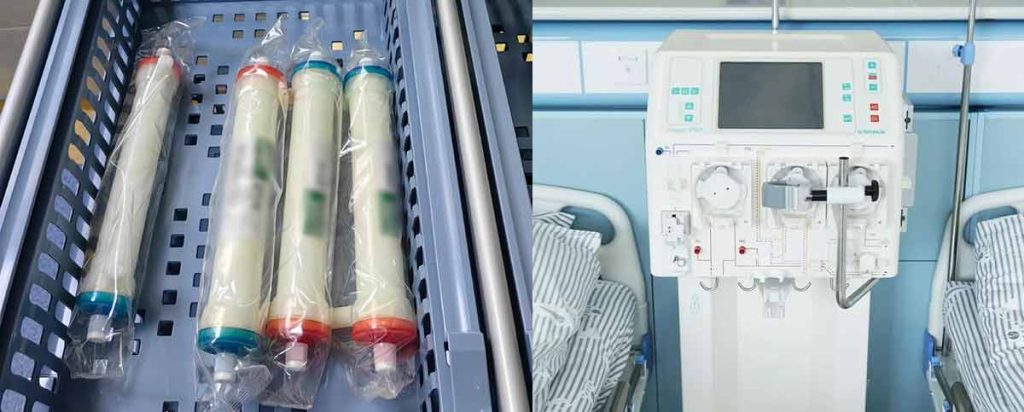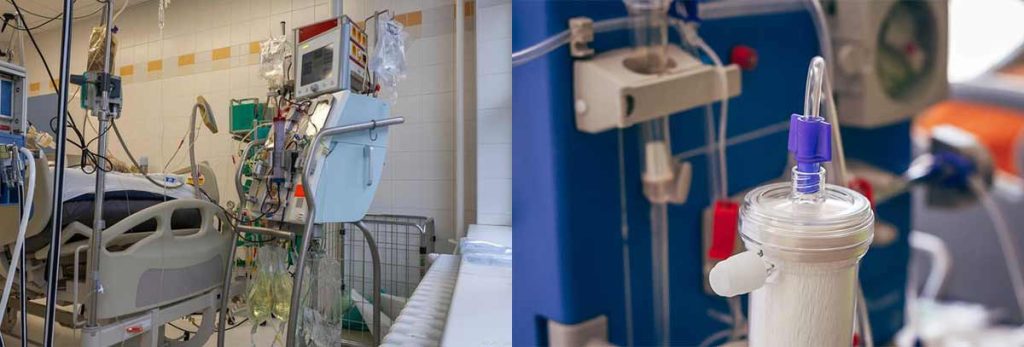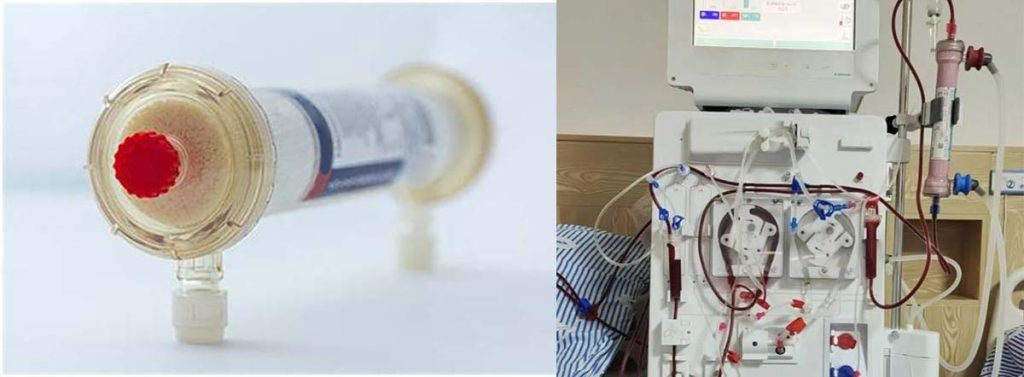

Infections pose a significant risk to dialysis patients, particularly those undergoing hemodialysis. Recent studies reported 199 dialysis events over 10,035 patient-months, with an overall rate of 1.98 per 100 patient-months. Patients trained in vascular access care experienced fewer infections, highlighting the importance of proactive prevention. Low vaccination rates for diseases like influenza and pneumococcal pneumonia further emphasize the need for better infection prevention strategies in this vulnerable population.
Effective prevention of dialysis infection revolves around three pillars: hygiene, medical protocols, and patient education. Simple actions, such as proper handwashing and routine monitoring of access sites, can drastically reduce risks. By adopting these measures, patients and caregivers can protect health and improve outcomes, even in home dialysis settings.
Key Takeaways
- Wash your hands often. Clean hands help stop infections in dialysis patients.
- Clean dialysis access spots daily. Use antiseptic solutions to avoid infections.
- Check access spots often. Tell your doctor if you see redness or swelling.
- Live healthy. Eat balanced meals, exercise, and drink enough water to stay strong.
- Learn about vaccines. Shots for flu and pneumonia can prevent serious sickness.
Hygiene Practices for Dialysis Infection Prevention
Wash Your Hands: A Simple Yet Powerful Step
Hand hygiene plays a critical role in preventing dialysis infection. Patients undergoing hemodialysis face a higher risk of infections due to their weakened immune systems and frequent exposure to healthcare environments. Washing hands thoroughly and regularly reduces the likelihood of transferring harmful pathogens to dialysis access sites or other vulnerable areas.
Regular hand hygiene is emphasized as a fundamental infection prevention strategy in hemodialysis units, where patients are at increased risk of healthcare-associated infections due to their compromised immune status. The guidelines recommend adherence to hand hygiene practices to significantly reduce the risk of infections among dialysis patients.
Healthcare providers and caregivers should also prioritize hand hygiene before and after assisting patients. Using soap and water or alcohol-based hand sanitizers ensures effective removal of germs. Patients should be encouraged to wash their hands before touching their dialysis access sites or handling medical equipment. This simple yet powerful step can significantly lower the risk of bloodstream infections and other complications.
Cleaning and Caring for Dialysis Access Sites
Proper cleaning and disinfection of dialysis access sites are essential for infection prevention. Dialysis access points, such as catheters or fistulas, provide direct entry to the bloodstream, making them highly susceptible to infections. Patients should follow strict hygiene protocols to keep these sites clean and free from contaminants.
Research highlights the effectiveness of cleaning and disinfection practices in reducing infection rates. For example:
| Evidence Description | Result |
|---|---|
| Significant reduction in catheter-related bloodstream infections in two dialysis facilities during COVID-19 | Almost 90% reduction in infection rates from February to May 2020 compared to 2019 |
| Improved hygiene practices during the pandemic | Increased handwashing and use of hand sanitizer contributed to better infection prevention results |
Patients should clean their access sites daily using antiseptic solutions recommended by their healthcare providers. Chlorhexidine-based solutions have shown higher success rates in reducing colonization and bloodstream infections compared to povidone-iodine.
| Intervention Type | Success Rate | Risk Reduction | Absolute Risk Reduction | Statistical Significance |
|---|---|---|---|---|
| Chlorhexidine vs. Povidone-Iodine | 49% reduction in CRB | 1.60% decrease in CRB incidence | 7.1% for colonization, 1.1% for BSI | p<0.001 for colonization, p=0.200 for CRB |
| Catheter Care Protocol | Decrease from 6.7 to 1.6 episodes per 1,000 catheter days | N/A | N/A | N/A |
Patients should avoid touching their access sites unnecessarily and report any signs of redness, swelling, or discharge to their healthcare team immediately. These proactive measures ensure better infection prevention and improve overall outcomes for dialysis patients.

Medical Protocols to Preventing Infection
Regular Monitoring of Dialysis Access Sites
Regular monitoring of dialysis access sites plays a crucial role in preventing infection. Dialysis access points, such as a central venous catheter or a peritoneal dialysis catheter, provide direct entry to the bloodstream. This makes them highly vulnerable to infections, including bloodstream infections. Healthcare providers must inspect these sites for signs of redness, swelling, or discharge during every treatment session. Early detection of abnormalities can prevent minor issues from escalating into severe complications.
Studies have shown that adherence to medical protocols significantly reduces infection rates. For example:
- Pre-pandemic adherence to hemodialysis and medical regimens among patients with end-stage renal disease reached 88.3%.
- This adherence included 47.3% moderate and 41.0% good adherence, a notable improvement compared to the 50% adherence rate reported in earlier studies.
Patients should also be educated to self-monitor their access sites at home. They should report any unusual symptoms to their healthcare team immediately. This proactive approach ensures timely intervention and reduces the risk of healthcare-associated infections.
Sterile Techniques During Hemodialysis Procedures
Maintaining sterile supplies and using sterile techniques during hemodialysis procedures are essential for preventing infection. Hemodialysis involves frequent handling of medical equipment and access sites, increasing the risk of contamination. Healthcare providers must follow strict infection control standards, including the use of gloves, masks, and sterile drapes.
A comprehensive review highlights the effectiveness of these protocols:
| Evidence Type | Findings | Source |
|---|---|---|
| Adherence to infection control standards | Improved adherence led to a decrease in CRBSI from 2.33 to 1.07 events per 100 patients per month. | Milson et al. (2019) |
| Use of Bio Patch | Proven to reduce CRBSI by 60% in a randomized controlled study. | Khurgin & Garber (2014) |
| Chlorhexidine use | Associated with a lower incidence of catheter-related infections compared to povidone iodine. | Mimoz et al. (2015) |
| Educational intervention | Increased staff knowledge and reduced infection episodes. | Warren et al. (2004) |
Sterile techniques also extend to the treatment area. The environment where dialysis occurs must remain clean and free from potential contaminants. Regular disinfection of surfaces and equipment minimizes the risk of healthcare-associated infections. Patients should also avoid bringing unnecessary items into the treatment area to reduce exposure to germs.
By adhering to these medical protocols, healthcare providers and patients can work together to lower the risk of infections. These measures not only improve patient outcomes but also enhance the overall safety of dialysis treatment.
Patient Education and Lifestyle Adjustments
Recognizing Early Signs of Dialysis Infection
Recognizing early signs of infections is crucial for dialysis patients. Symptoms such as fever, chills, redness, swelling, or discharge around the access site often indicate an infection. Patients undergoing hemodialysis should remain vigilant about these warning signs. Early detection allows for timely treatment, reducing the risk of complications like bloodstream infections.
Kidney failure weakens the immune system, making patients more prone to infections. Awareness of symptoms and preventive measures helps protect their health.
Studies emphasize the importance of patient education in identifying infections. Understanding how infections develop and knowing when to contact your doctor can significantly lower infection risk. For example:
- Patients educated about infectious diseases are better equipped to recognize symptoms.
- Awareness of preventive measures reduces the likelihood of complications.
- Knowledge of how kidney failure impacts immunity highlights the need for vigilance.
Patients should take care of their access by inspecting it daily for abnormalities. Reporting unusual symptoms promptly ensures early intervention and better outcomes.
Healthy Living Habits for Infection Prevention
Adopting healthy habits strengthens the body’s ability to fight infections. Proper hygiene, including regular handwashing, minimizes exposure to harmful pathogens. Dialysis patients should also maintain a clean environment, especially in home dialysis settings, to reduce infection risk.
A balanced diet rich in vitamins and minerals supports immune function. Staying hydrated and avoiding processed foods further enhances overall health. Regular exercise, tailored to individual capabilities, improves circulation and boosts immunity.
Lifestyle adjustments, such as quitting smoking and limiting alcohol, also play a vital role in infection prevention.
Patients should follow their healthcare provider’s recommendations for vaccinations. Immunizations against influenza and pneumococcal pneumonia lower the risk of severe infections. Additionally, managing chronic conditions like diabetes or hypertension helps maintain overall health.
By combining these habits with medical guidance, patients can effectively reduce their infection risk and improve their quality of life.

Conclusion
Proactive infection prevention remains vital for dialysis patients, especially those undergoing hemodialysis or home dialysis. By focusing on hygiene practices, medical protocols, and patient education, individuals can significantly reduce the risk of infections. Simple actions, such as regular handwashing and proper care of access sites, play a crucial role in minimizing complications.
Clinical outcomes highlight the effectiveness of these measures. For instance:
| Measure | Previous Compliance Rate | Current Compliance Rate | p-value |
|---|---|---|---|
| Use of masks | 98.2% | 99.8% | < 0.001 |
| Use of disposable gowns | 66.1% | 76.5% | < 0.001 |
| Use of goggles or face shields | 74.0% | 85.6% | < 0.001 |
| Observation of patients with suspected infection | 96.1% | 97.6% | 0.005 |
| Changing linens or using non-permeable mats | 34.4% | 51.3% | < 0.001 |
Patients and caregivers should consistently implement these strategies, whether in clinical settings or during home dialysis. Consulting healthcare providers for personalized guidance ensures better outcomes and reduces the likelihood of infections. A commitment to these practices fosters a safer and healthier dialysis experience.
